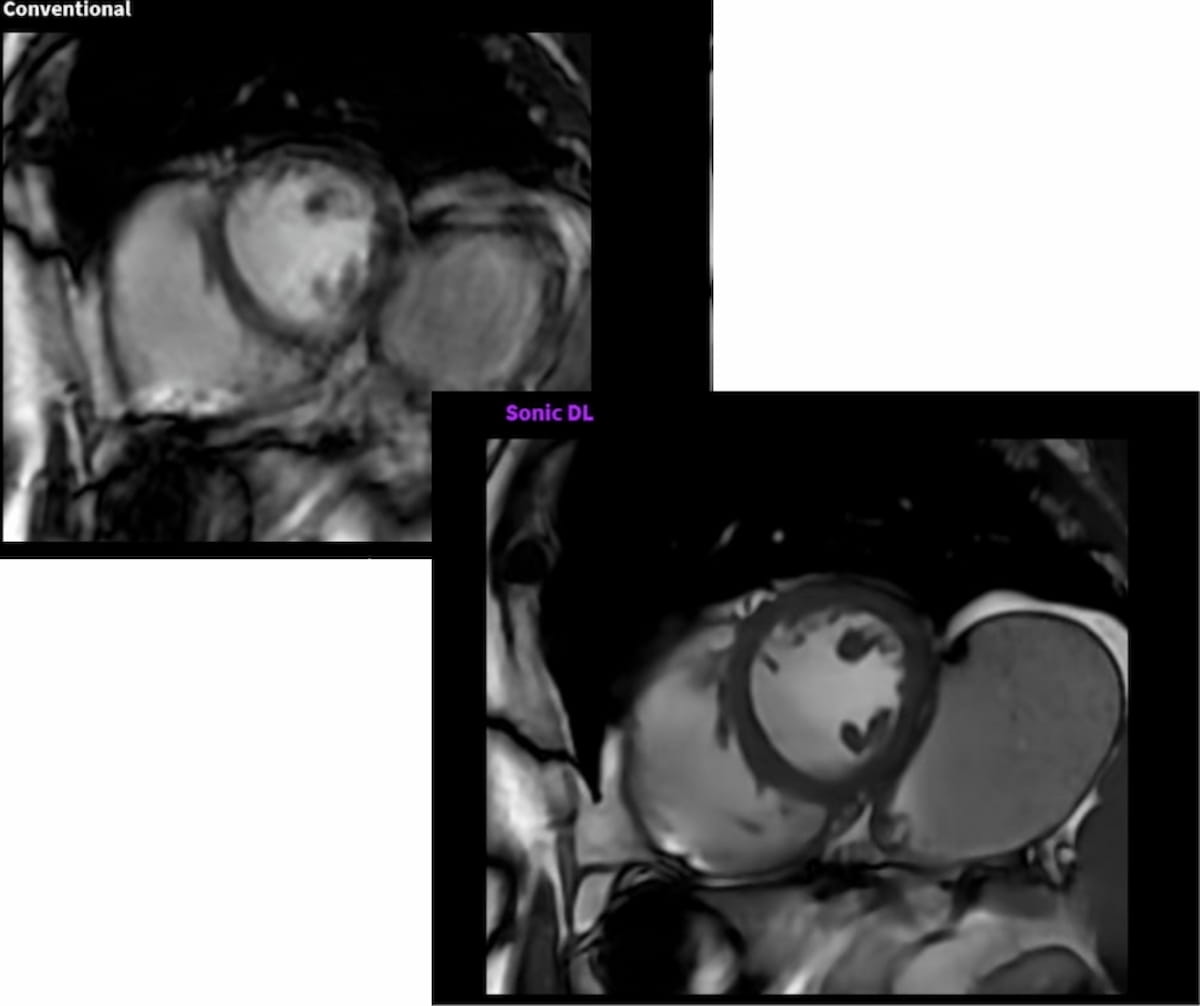FDA Clears Cardiac AI Software That May Reduce MRI Scan Times by 83 Percent
Powered by deep learning technology, Sonic DL reportedly facilitates the acquisition of cardiac magnetic resonance imaging (MRI) scans at 12 times the speed of conventional MRI systems.
The Food and Drug Administration (FDA) has granted 510(k) clearance to Sonic DL (GE HealthCare), a deep learning software that may reinvent scan time expectations and possibly expand the eligibility of patients for cardiac magnetic resonance imaging (MRI).
GE HealthCare said Sonic DL can improve radiology workflow efficiency and alleviate backlogs with its ability to slash scan times for cardiac MRI by up to 83 percent. Emphasizing the capability of Sonic DL to facilitate real-time functional imaging “as fast as a single heartbeat,” the company noted the artificial intelligence (AI) technology was designed to allow the acquisition of MRI scans at 12 times the rate of conventional MRI.
The accelerated scanning may also allow broader patient access to cardiac MRI, according to Gianluca Pontone, M.D., Ph.D., F.E.S,C., the director of the Perioperative Cardiology Cardiovascular Imaging Department at Centro Cardiologico Monzino in Milano, Italy.
“Sonic DL emerges as a game-changer in the field of cardiac imaging. By capturing images within a single heartbeat, this cutting-edge technology addresses the unique needs of patients who face challenges in breath-holding, suffer from advanced heart failure, or have arrhythmias,” noted Dr. Pontone. “The significance of this capability cannot be overstated as it ensures a smoother and more comfortable experience for patients during MRI exams.”
Here one can see conventional cardiac MRI (left) offering whole heart coverage in one minute and 42 seconds vs. Sonic DL (right), which facilitates whole heart coverage in 59 seconds. Note that rapid imaging on the right reduces motion artifacts for a patient who cannot follow a breath hold command. (Images courtesy of GE HealthCare.)

(Editor’s note: For related content, see “FDA Clears AI Software That May Lead to 30-Minute Full-Body MRI Exams,” “Emerging AI Advances in Cardiac Imaging” and “Can Emerging AI-Guided Software Rein in Scan Times for Cardiac MRI?”)
FDA Clears AI Assessment of Ischemic Core Volume on CT with Brainomix 360 Platform
April 8th 2025For patients with acute ischemic stroke, research has demonstrated that automated assessment of ischemic core volume on brain CT scans via the Brainomix 360 software is equivalent to that derived from CT perfusion.
What New Research Reveals About Novice Use of AI-Guided Cardiac Ultrasound
April 4th 2025In a study recently presented at the American College of Cardiology (ACC) conference, researchers found that novice use of AI-guided cardiac ultrasound after an AI-enabled electrocardiogram increased the positive predictive value for reduced left ventricular ejection fraction (LVEF) or aortic valve stenosis by 33 percent.
GE HealthCare Debuts AI-Powered Cardiac CT Device at ACC Conference
April 1st 2025Featuring enhanced low-dose image quality with motion-free images, the Revolution Vibe CT system reportedly facilitates improved diagnostic clarity for patients with conditions ranging from in-stent restenosis to atrial fibrillation.